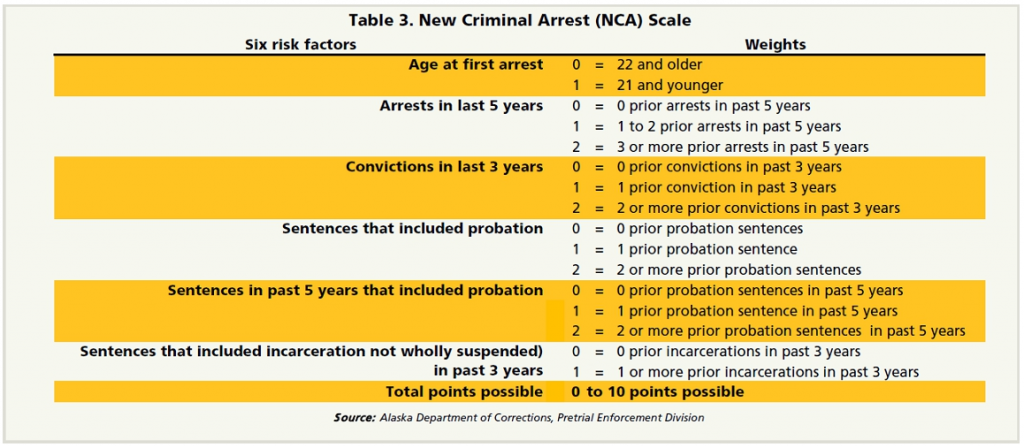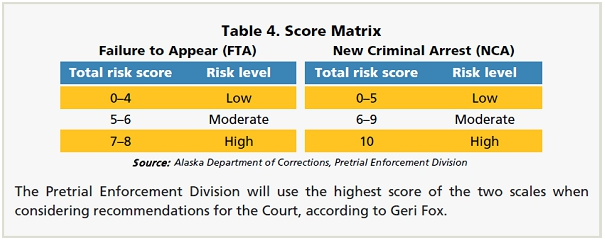Plea Deals in Alaska: An Overview
Most criminal cases in the U.S. result in plea agreements rather than going to trial. Also known as plea bargains or plea deals, these agreements involve prosecutors, judges, and defendants reaching a negotiated conclusion to a criminal case.
The agreement involves the defendant entering a guilty or no contest plea in exchange for things like a reduction in the level of a charge, a reduced number of charges, or the recommendation of a lighter sentence.
A plea deal means that the defendant is convicted and sentenced for the criminal behavior to which they are admitting. The victim can use a guilty plea in a later civil lawsuit to prove the defendant committed the crime.
If they do accept a plea deal and the court approves, defendants forfeit their right to a jury trial, their right to maintain their innocence, their right to confront and cross-examine witnesses and the right to testify in their own defense or remain silent.
Plea deals have been on the rise as courts have become overburdened, inefficient, and backlogged. According to the National Association of Criminal Defense Lawyers, less than 3 percent of criminal cases went to trial during the last five decades. The remaining 97 percent resulted in plea bargains. Alaska reflects the national trend.
Many defendants feel it is much riskier to exercise their right to trial rather than accept a plea deal because if convicted at trial, they may face lengthy jail terms. Defendants often decide to plead guilty or no contest between their arraignment, when they are formally charged with a crime, and the date set for trial.
Do Victims Have a Voice When It Comes to Plea Deals?
Under Alaska law, victims have the constitutional right to confer with prosecutors about potential plea deals. The victim does not have the right to decide if the prosecutor offers the plea or not; only the right to talk to the prosecutor about the plea. Prosecutors must make reasonable efforts to confer with victims or the victim’s legal guardian, according to the Office of Victims’ Rights.
The prosecutor must record whether the victim or the victim’s legal guardian agrees with the proposed plea deal. The courts can reschedule a hearing if it is needed to consider a plea agreement and allow additional time to comply with the victim notification requirements.
While victims have a right to give prosecutors input on proposed plea deals, only prosecutors can decide whether to offer them. Their job is to weigh the evidence, decide how strong it is and evaluate what the sentence is likely to be. Prosecutors must also factor in what is in the public interest along with the interests of the victim or the victim’s survivors. Prosecutors will often ask the victim or the victim’s survivors if they are comfortable with the proposed plea deal. If victims disagree with the plea deal, prosecutors may drop the proposal and proceed to trial, but they do not have to drop the proposal if the victim disagrees. The final decision rests with the prosecuting attorney and victims do not have legal standing to appeal.
In its 2020 annual report, the Alaska Office of Victims’ Rights identified a common complaint from victims in that prosecutors fail to notify them about plea agreement offers. “Some victims never learn about the plea deal; others only learn about the plea offer after the prosecutor extended it to the defense. This eviscerates any input the victims would like to have had and their right to be treated with dignity, fairness and respect,” the report says.
What Happens After a Plea Deal is Reached?
Once the defendant chooses to accept a plea, the court will schedule a change of plea hearing. During this hearing, the judge will ensure that the defendant is entering into the plea voluntarily and understands the rights they are forfeiting by pleading guilty or no contest.
At the change of plea hearing, the judge has the discretion to accept or reject the plea; however, in most cases, the judge will accept the agreement. Even if the judge personally feels the plea agreement is not appropriate, she or he can only reject the plea if it fails to comply with the law.
When Do I Give My Victim Impact Statement?
Victims have the right to give their victim impact statement during sentencing. For lower-level crimes, the defendant will often receive their sentence at the change of plea hearing. This means that the victim will be able to give their statement at this hearing. In most felony-level crimes, there will be a separate sentencing hearing usually about 2-3 months after the change of plea. In sentencing hearings for felony cases, victims will give their statement at the sentencing hearing.
It is important for victims to speak to the paralegal assigned to the case or to their victim advocate to understand the timing of when to provide a victim impact statement.
What Can I Include in My Victim Impact Statement?
This is the victim’s time to express to the court how the crime or crimes that the defendant committed have impacted the victim’s life: emotionally, financially, medically, and in any other way. For more guidance on writing a victim impact statement, visit https://victimsforjustice.org/have-your-say/prepare-your-statement/
How is the Sentence Decided?
Sentencing of low-level crimes is based on sentencing guidelines and the facts of the case.
Sentencing decisions in felony-level crimes take this information into account, plus information from a presentence report.Presentence reports are typically written by probation officers and include thorough research of the defendant’s background. According to the Alaska Office of Victims’ Rights, “the report will address such topics as the defendant’s prior criminal history, employment history, military service, family background, and so forth.” (https://ovr.akleg.gov/docs/Glossary.pdf). Written victim impact statements may also be included in the presentence report.
Sentencing in felony-level cases can be decided in two different ways: closed sentencing or open sentencing. If the plea agreement includes a closed sentence, this means that the prosecution and defense agree ahead of time on the sentence. If the plea agreement includes open sentencing, that means that the attorneys will offer a suggested sentencing range, but the judge will make the final decision on the sentence.
Nuances in Sentencing
Numerous factors can impact the duration of sentence a defendant will actually serve.
Concurrent vs Consecutive: Judges often have the discretion to impose concurrent or consecutive sentences when a defendant is convicted or pleads guilty to multiple charges. When sentences run concurrently, the defendant serves all the sentences at the same time. When consecutive sentences are imposed, the defendant must serve one after the other.
For example: John Doe was sentenced to 5 years for charge X and 2 years for charge Y. If his sentence is concurrent, he will be incarcerated for 5 years. If his sentence is consecutive, then he will be incarcerated for 7 years.
Suspension: Judges can suspend part of the sentence. This basically means that the defendant does not have to serve the entire sentence incarcerated. They may serve the suspended portion on probation. If they violate probation conditions, they may have to return to prison for some time. Keep in mind, they would not automatically be incarcerated to serve the entire rest of their sentence if they violate probation.
For example: The judge sentences John Doe to 5 years with 2 suspended. This means he is only serving 3 years in custody. After 3 years, he is released on probation to serve the rest of his time under supervision in the community.
Time served: Many incarcerated individuals spend time in jail waiting for trial and sentencing. They may also be held in restricted settings like halfway houses and residential treatment programs.
Judges often give these individuals credit for time served, deducting the time spent waiting behind bars from the total sentence. If the time spent waiting is about the length of an appropriate sentence, the judge may sentence the person to time served and release them. If the incarcerated individual is in jail for more than one offense, credit for time served will be applied to only one case.
Example #1: John Doe was sentenced to 5 years. However, he never got out on bail, and he was in jail for a full year from the time he was arrested up until sentencing. Because of his “time served,” he will only be incarcerated for another 4 years after sentencing because he already served one year awaiting trial.
Example #2: John Doe was sentenced to one year. However, he never got out on bail, and he was in jail for a full year from the time he was arrested up until sentencing. Because of his “time served,” he will be released after sentencing.
Computation of “Good Time”: According to Alaska law, any person who is “sentenced to a term of imprisonment that exceeds three days is entitled to a deduction of one-third of the term of imprisonment rounded off to the nearest day if the prisoner follows the rules of the correctional facility in which the prisoner is confined” (http://touchngo.com/lglcntr/akstats/statutes/Title33/Chapter20/Section010.htm). In other words, this means that any person who has a sentence of three days or longer will only have to serve 2/3 of their sentence.
Many victims are not advised about “good time” by prosecutors because this law falls under the Department of Corrections and takes effect after the case has closed. The attorneys and judges are not involved with “good time.”
Example: John Doe is sentenced to 5 years. He follows the rules at the correctional facility, so 1/3 of his time (1.65 years) is automatically deducted. John Doe will only have to serve 3.3 of the 5 years he was sentenced.
Putting It All Together: An Example of Sentencing in Alaska
John Doe was sentenced to 30 years, with 10 suspended for charge X, and 10 years with 5 suspended for charge Y. This sentence will be served concurrently (at the same time). John Doe has also been in jail for 2 years waiting for trial. Lastly, it is assumed that all inmates will receive the good time deduction:
| Charge | Time | Suspended | Actual |
| X | 30 | 10 | 20 |
| Y | 10 | 5 | 5 |
| Total sentence: | 25 years | ||
| Total time to served concurrently: | 20 years | ||
| Time served | -2 years | ||
| Good Time of time to serve (20 years) | -1/3 or 6.6 years | ||
| Total time you can expect John Doe to spend in prison: | 11.4 years | ||
Understanding sentencing can be confusing to people outside the legal profession. Victims are advised to consult with the paralegal involved in the case and with their advocate for assistance in understanding sentencing.
Further Reading:
Office of Victims’ Rights, Alaska
U.S. Department of Justice, Office of Justice Programs
Alaska Criminal Justice Commission
Victims’ Rights Handbook, Alaska




Recent Comments